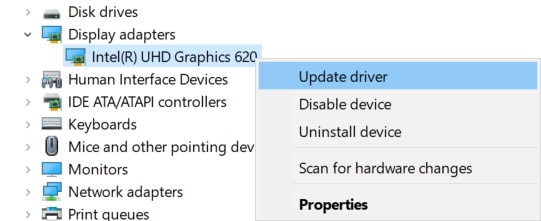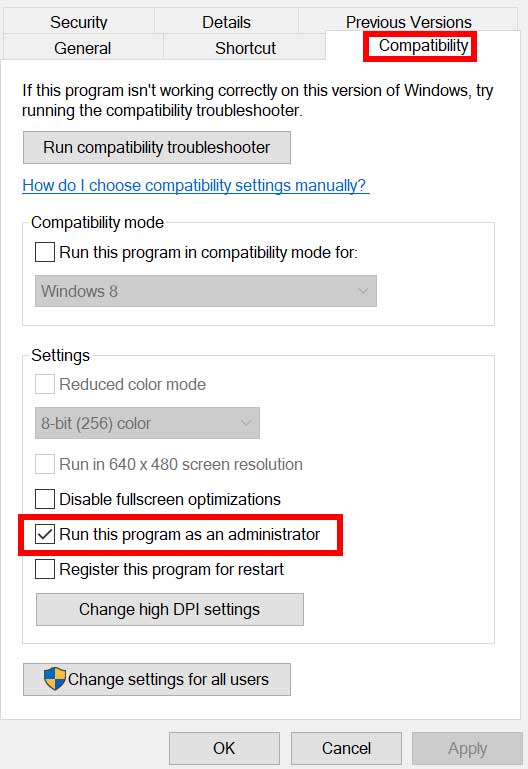GRID Legends is one of racing story-rich sports video games that delivers thrilling motorsport action like never before. Players can create dream race events, hop into live races, experience a dramatic virtual production story, and more. Codemasters and Electronic Arts team have done a great job by releasing this title for all three major platforms. However, some players are facing the GRID Legends FPS drops on the PC or they want to Increase Performance.
Now, if you’re also one of the victims to encounter such an issue then you can follow this troubleshooting guide completely. This title has already received mostly positive reviews on Steam for the PC version. Still, there are some bugs or glitches or any kind of in-game graphics settings issues that you need to look out for manually. Otherwise, you might gonna encounter frame drops, lags, or stutters in performance a lot. Well, without further ado, let’s get into it.
Also Read
Fix: GRID Legends Stuck on loading screen
Fix: GRID Legends No Audio | Sound Cutting Out
Fix: GRID Legends Stuttering or Lagging on PC
Fix: GRID Legends License Check Failed Error
Fix: GRID Legends Crashing on PS4, PS5, or Xbox Consoles
Fix: Low FPS Using NVIDIA Graphics Card After Windows 11 Update

Page Contents
- Fix: GRID Legends FPS drops on PC | Increase Performance
- 1. Check System Requirements
- 2. Perform a Disc Cleanup
- 3. Change High DPI Settings
- 4. Disable Fullscreen Optimizations
- 5. Select Dedicated GPU
- 6. Enable Game Mode, Game Bar, and Disable Capture
- 7. Adjust In-Game Graphics Settings
- 8. Update Graphics Drivers
- 9. Run the game as an administrator
- 10. Close Background Running Tasks
- 11. Set High Performance in Power Options
- 12. Enable Hardware Accelerated GPU Scheduling
Fix: GRID Legends FPS drops on PC | Increase Performance
As it’s a graphics-intensive video game that requires the latest software or programs to be installed and compatible hardware specifications on the Windows PC to run smoothly, you’ll need to keep in mind some things. Here we’ve shared a couple of possible workarounds that should gonna help you out.
1. Check System Requirements
In most scenarios, your PC specification might trigger FPS drops or lags if it doesn’t meet the system requirements of the game. So, we’ll suggest you check out the game’s system requirements first and then head over to any other solution.
Minimum Requirements:
- Requires a 64-bit processor and operating system
- OS: 64-bit Windows 10/11
- Processor: Intel i3 2130, AMD FX4300
- Memory: 8 GB RAM
- Graphics: NVIDIA GTX 950, AMD RADEON RX 460
- DirectX: Version 12
- Network: Broadband Internet connection
- Storage: 50 GB available space
- Sound Card: DirectX Compatible Soundcard
Recommended Requirements:
- Requires a 64-bit processor and operating system
- OS: 64-bit Windows 10/11
- Processor: Intel i5 8600k, AMD Ryzen 5 2600x
- Memory: 16 GB RAM
- Graphics: Nvidia GTX 1080, AMD RX590
- DirectX: Version 12
- Network: Broadband Internet connection
- Storage: 50 GB available space
- Sound Card: DirectX Compatible Soundcard
2. Perform a Disc Cleanup
If you’re feeling that the drive has some issues where the game has been installed then make sure to perform a disc cleanup process by following this link to ensure there is no game launching or running issues whatsoever. Not only on Windows 10 but you can also do the same steps on Windows 11 to achieve this.
Make sure to delete the temporary folder on the system drive after disc cleanup. Just press Win+R keys to open the Run dialog box. Then type %temp% in the field and hit Enter > Select all temporary files by pressing Ctrl+A keys and then hit the Delete key > Confirm deleting all temp files to remove unnecessary piles of files. Finally, reboot the PC to refresh the system.
Note: Some temp files may not delete in most scenarios which is normal. Simply, select ‘Do this for all current items’ and then click on ‘Skip’.
3. Change High DPI Settings
Sometimes changing the high DPI settings for the game application executable file may fix frame drops issues. You can try it out.
- Launch the Steam client > Go to Library.
- Right-click on GRID Legends > Go to Manage.
- Click on Browse local files > The game installed folder will open on File Explorer.
- Here you’ll need to scroll down the page a bit and you’ll find the GridLegends.exe application file.
- Simply right-click on this file > Click on Properties.
- Click on the Compatibility tab > Click on Change High DPI Settings.
- Enable/Checkmark the “Override high DPI scaling behavior. Scaling performed by: Application” checkbox.
- Then click on OK > Click on Apply then try running the game again.
4. Disable Fullscreen Optimizations
- Launch the Steam client > Go to Library.
- Right-click on GRID Legends > Go to Manage.
- Click on Browse local files > The game installed folder will open on File Explorer.
- Here you’ll need to scroll down the page a bit and you’ll find the GridLegends.exe application file.
- Simply right-click on this file > Click on Properties.
- Click on the Compatibility tab > Click on Disable Fullscreen Optimizations to enable/checkmark it.
- Finally, click on Apply and then OK to save changes.
5. Select Dedicated GPU
It’s worth recommending to select a dedicated graphics card if you’re using an external GPU. Selecting the dedicated GPU for games will allow PC gamers to gain higher frame rates and a better graphical experience than an integrated GPU.
- Click on the Start menu > Search for Graphics Settings and get into it.
- Inside this, make sure that the Desktop app is selected > Click on Browse.
- File Explorer window will open and head over to the installed Steam folder.
- Click on the Steam application exe file and add it to the list.
- Now, click on Options of Steam > Click on High Performance.
- Click on Save then try launching the game again to check for the issue.
6. Enable Game Mode, Game Bar, and Disable Capture
Make sure to turn on Xbox Game Mode on your Windows PC whether you’re using Windows 10 or Windows 11. It’ll eventually boost the gaming experience during the gameplay. To do so:
- Just press the Windows + I keys on the keyboard to open Windows Settings.
- Click on Gaming > Select Game Mode.
- Then select Turn it on. By doing so, you’ll be able to optimize your PC for play by turning things off in the background.
- Next, go back to the Gaming section again > Turn on Xbox Game Bar. [If it’s already enabled then try turning it off and check for the issue]
- You’ll need to turn off Captures to improve gaming performance a bit.
7. Adjust In-Game Graphics Settings
By adjusting the in-game graphics settings, you’ll be able to fix graphical glitches, stutters, frame drops up to some extent. To do so:
- Launch the Steam client on your PC > Open the GRID Legends game.
- Once you’re in the gameplay, press the Escape key to go back to the main menu.
- Now, click on Options > Go to Video > Under the Basic tab, set Display Mode to Windowed or Fullscreen.
- Set the display resolution to recommended one whatever resolution is supported by your monitor or display device.
- Try turning off the Vertical Sync (V-Sync) option or vice versa to cross-check the performance.
- Next, head over to the Advanced tab > Select Medium or High or Ultra High to Choose Preset depending on the PC specification.
It should improve the gaming performance a lot depending on which preset and other graphical options you’re using.
8. Update Graphics Drivers
It’s recommended to check out graphics driver updates on your PC so games and other graphics-intensive programs can run properly. To do so:
- Right-click on the Start Menu to open up the Quick Access Menu.
- Click on Device Manager from the list.
- Now, double-click on the Display adapters category to expand the list.

- Then right-click on the dedicated graphics card name.
- Select Update driver > Choose Search automatically for drivers.
- If there is an update available, it’ll automatically download and install the latest version.
- Once done, make sure to reboot your computer to change effects.
Alternatively, you can manually download the latest version of the graphics driver and install it directly from the official website respective to your graphics card manufacturer. Nvidia graphics card users can update the GeForce Experience app via the Nvidia official site. Meanwhile, AMD graphics card users can visit the AMD website for the same.
9. Run the game as an administrator
You should also run the GRID Legends game executable file as an administrator to avoid user account control-related privilege issues. To do this:
- Right-click on the GRID Legends exe shortcut file on your PC.
- Now, select Properties > Click on the Compatibility tab.

- Make sure to click on the Run this program as an administrator checkbox to checkmark it.
- Click on Apply and select OK to save changes.
10. Close Background Running Tasks
Sometimes unnecessary background running tasks or programs can also consume a higher amount of CPU or Memory resources on the system which may cause crashes, lags, stutters, FPS drops, etc issues whatsoever. To do that:
- Press Ctrl + Shift + Esc keys to open up the Task Manager.
- Now, click on the Processes tab > Click to select tasks that are unnecessarily running in the background and consuming enough system resources.
- Click on End Task to close it > Do the same steps for all unnecessary tasks one by one.
- Once done, restart your system to apply changes.
11. Set High Performance in Power Options
If in case, your Windows system is running on the Balanced mode in Power Options that means the system and hardware aren’t running to their full potential. For the intense gameplay, you can simply set the High-Performance mode for better results. However, the high-performance mode will gonna consume higher battery usage if you’re using a laptop. To do this:
- Click on the Start Menu > Type Control Panel and click on it from the search result.
- Now, go to Hardware and Sound > Select Power Options.
- Click on High Performance to select it.
- Make sure to close the window and fully shut down your computer. To do this, click on the Start Menu > Go to Power > Shut Down.
- Once your computer is fully turned off, you can power it on again.
12. Enable Hardware Accelerated GPU Scheduling
It’s also worth recommending to enable the Hardware Accelerated GPU Scheduling option on your Windows computer (if available). To do so:
- Press the Windows + I keys on the keyboard to open Windows Settings.
- Now, go to System > Click on Display > Head over to Multiple Displays.
- Select Graphics settings > Turn on the Hardware-accelerated GPU scheduling option.
- Finally, reboot the system to apply changes.
That’s it, guys. We assume this guide was helpful to you. For further queries, you can comment below.
